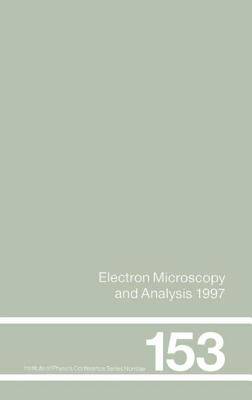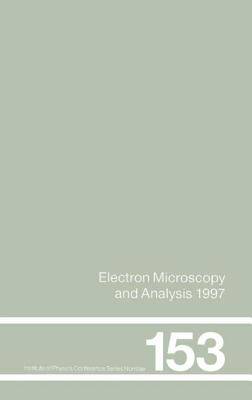
Bedankt voor het vertrouwen het afgelopen jaar! Om jou te bedanken bieden we GRATIS verzending (in België) aan op alles gedurende de hele maand januari.
- Afhalen na 1 uur in een winkel met voorraad
- Gratis thuislevering in België vanaf € 30
- Ruim aanbod met 7 miljoen producten
Bedankt voor het vertrouwen het afgelopen jaar! Om jou te bedanken bieden we GRATIS verzending (in België) aan op alles gedurende de hele maand januari.
- Afhalen na 1 uur in een winkel met voorraad
- Gratis thuislevering in België vanaf € 30
- Ruim aanbod met 7 miljoen producten
Zoeken
Electron Microscopy and Analysis 1997, Proceedings of the Institute of Physics Electron Microscopy and Analysis Group Conference, University of Cambridge, 2-5 September 1997
Rodenburg
€ 305,45
+ 610 punten
Omschrijving
Electron Microscopy and Analysis 1997 celebrates the centenary anniversary of the discovery of the electron by J.J. Thomson in Cambridge and the fiftieth anniversary of this distinguished Institute group. The book includes papers on the early history of electron microscopy (from P. Hawkes), the development of the scanning electron microscope at Cambridge (from K. Smith), electron energy loss spectroscopy (from L.M. Brown), imaging methods (from J. Spence), and the future of electron microscopy (from C. Humphreys). Covering a wide range of applications of advanced techniques, it discusses electron imaging, electron energy-loss and x-ray analysis, and scanning probe and electron beam microscopies. This volume is a handy reference for professionals using microscopes in all areas of physics, materials science, metallurgy, and surface science to gain an overview of developments in our understanding of materials microstructure and of advances in microscope interrogation techniques.
Specificaties
Betrokkenen
- Auteur(s):
- Uitgeverij:
Inhoud
- Aantal bladzijden:
- 708
- Taal:
- Engels
- Reeks:
- Reeksnummer:
- nr. 153
Eigenschappen
- Productcode (EAN):
- 9780750304412
- Verschijningsdatum:
- 1/01/1997
- Uitvoering:
- Hardcover
- Formaat:
- Genaaid
- Afmetingen:
- 156 mm x 234 mm
- Gewicht:
- 1161 g

Alleen bij Standaard Boekhandel
+ 610 punten op je klantenkaart van Standaard Boekhandel
Beoordelingen
We publiceren alleen reviews die voldoen aan de voorwaarden voor reviews. Bekijk onze voorwaarden voor reviews.









